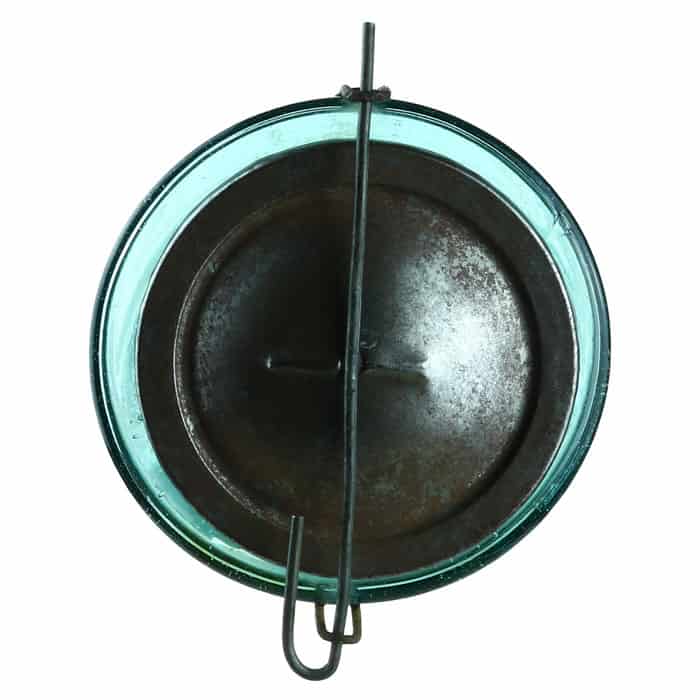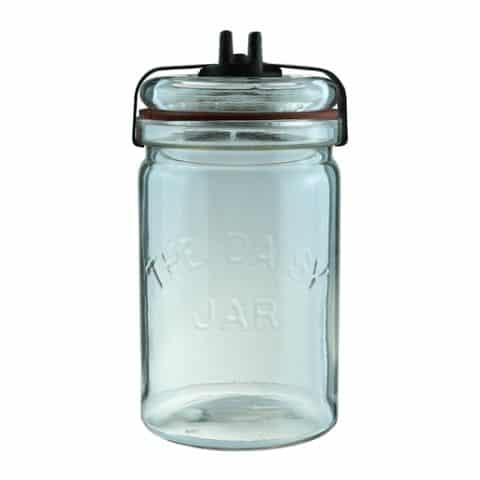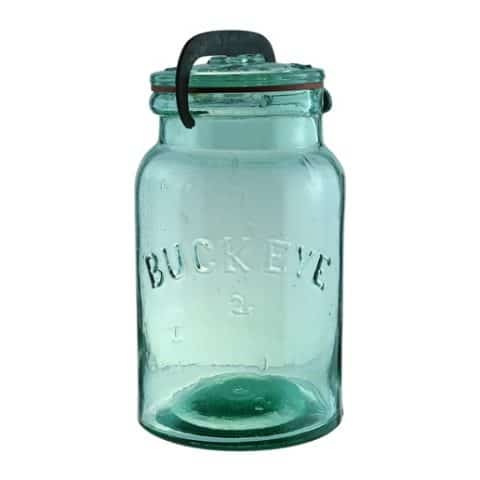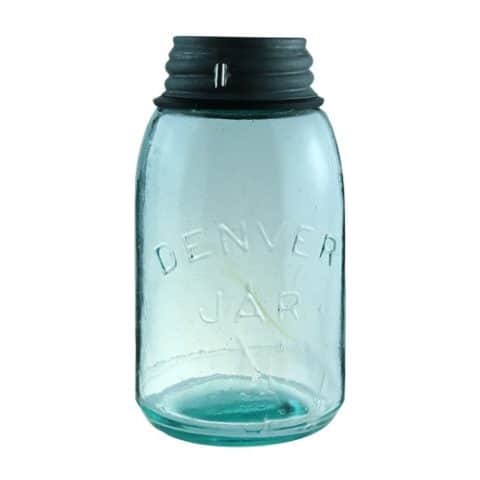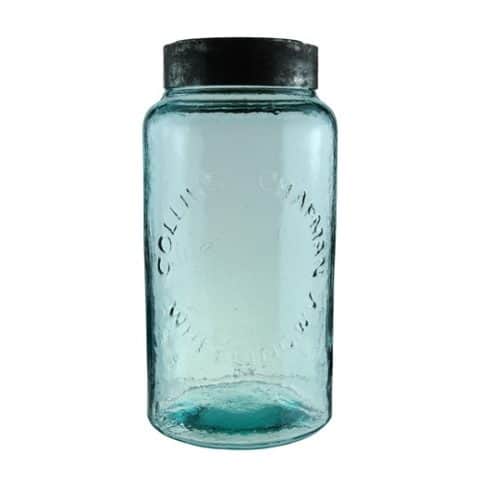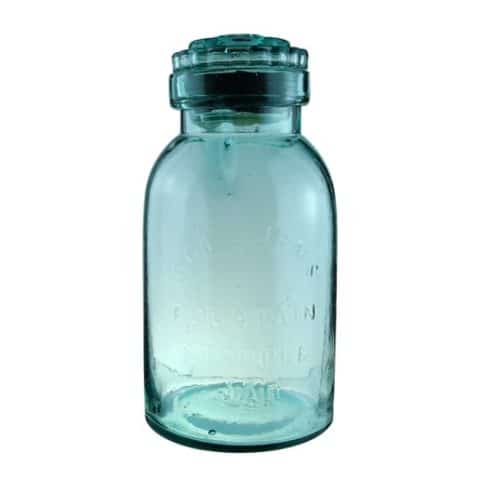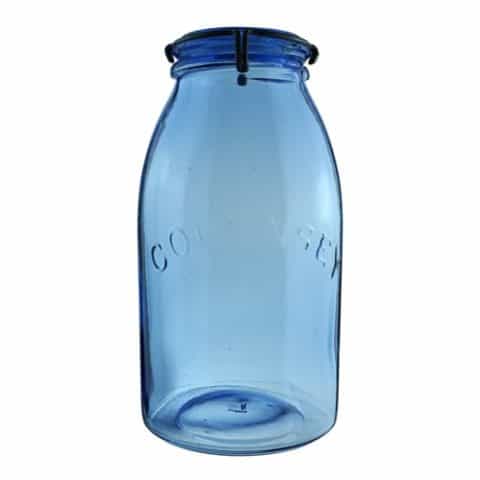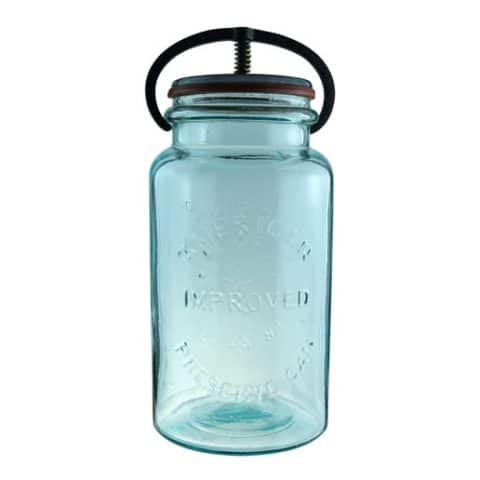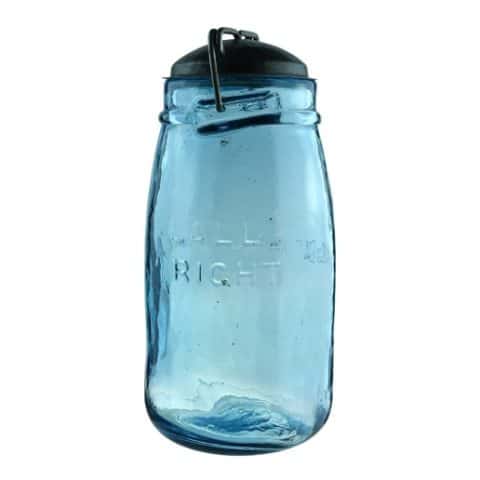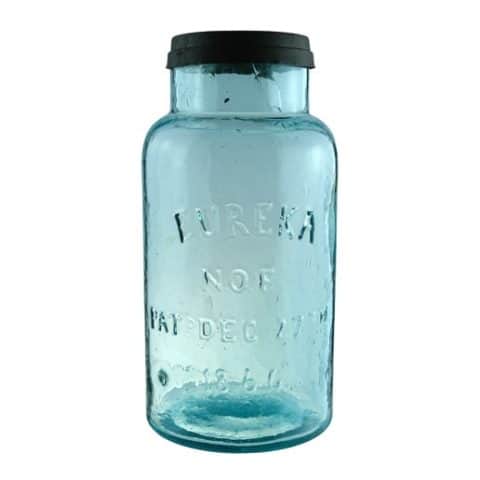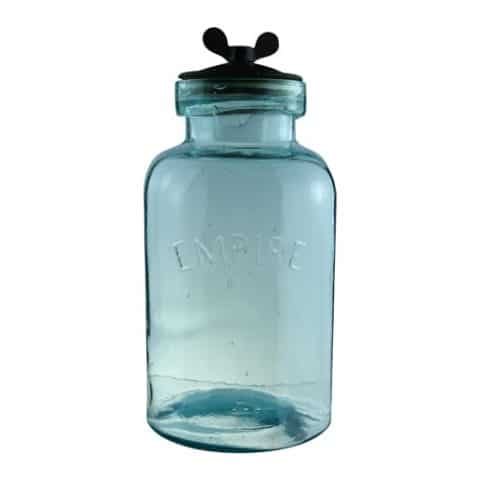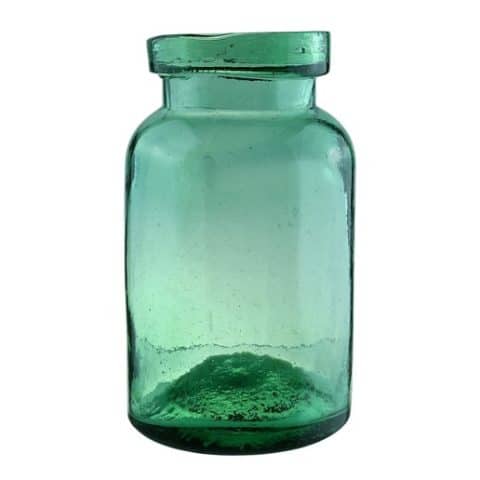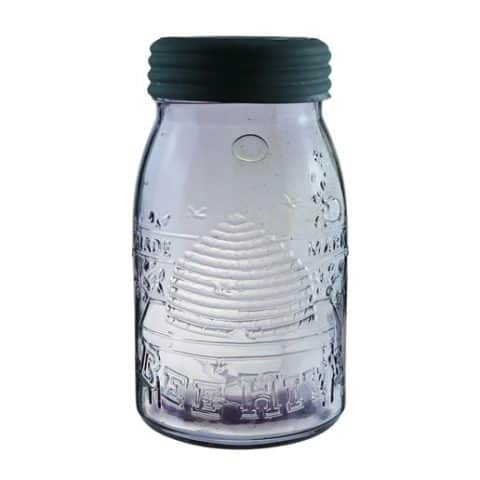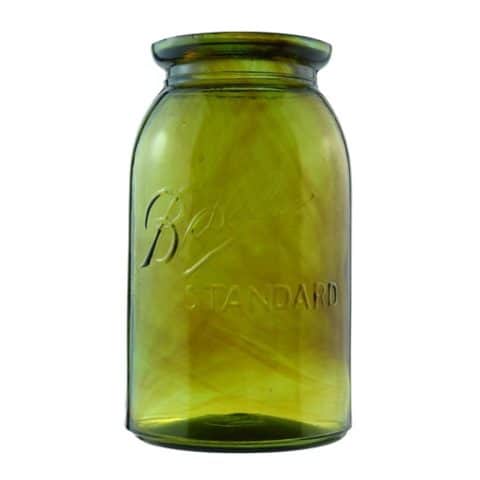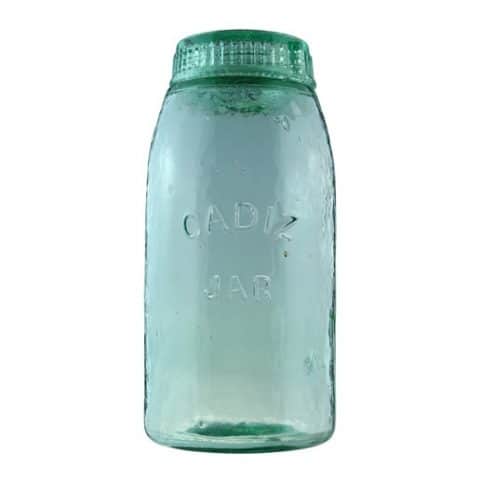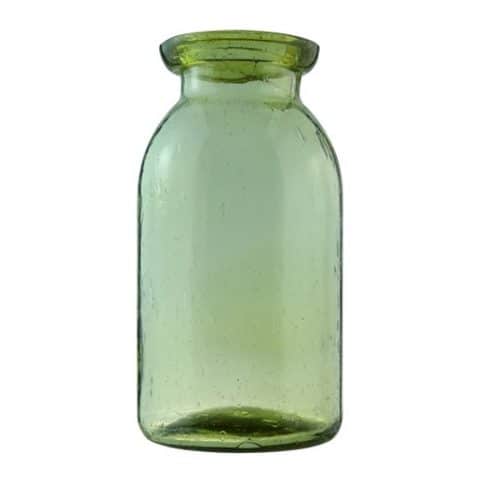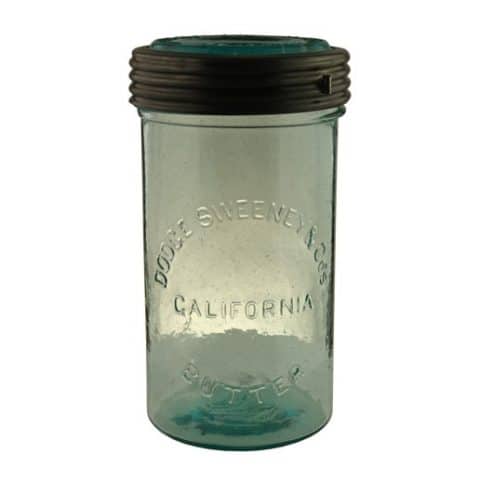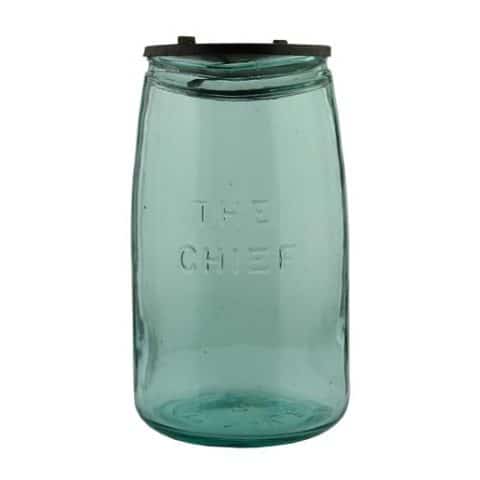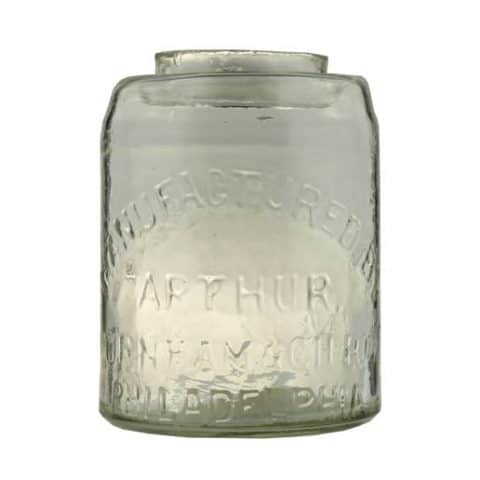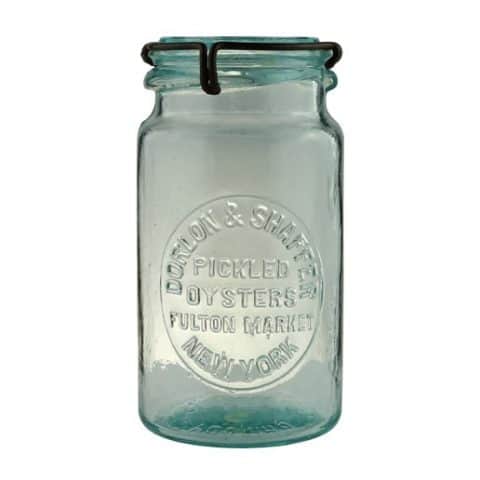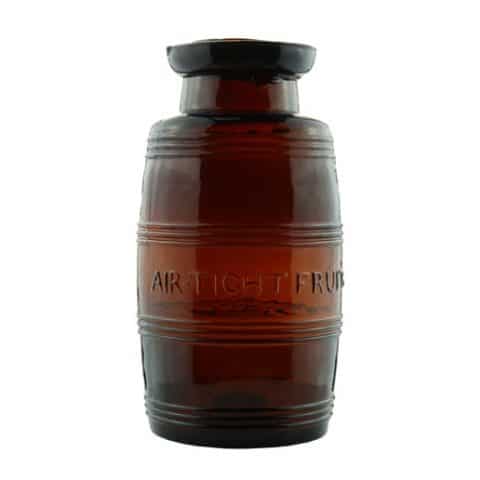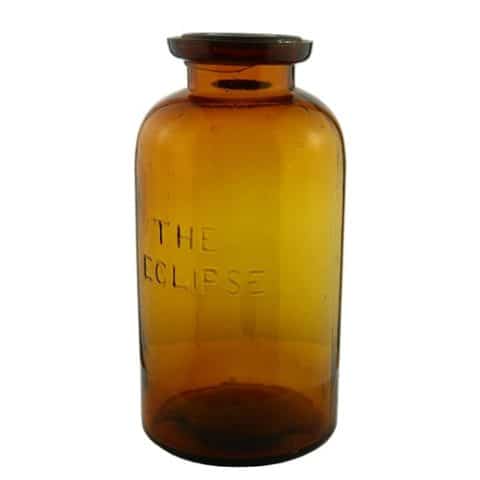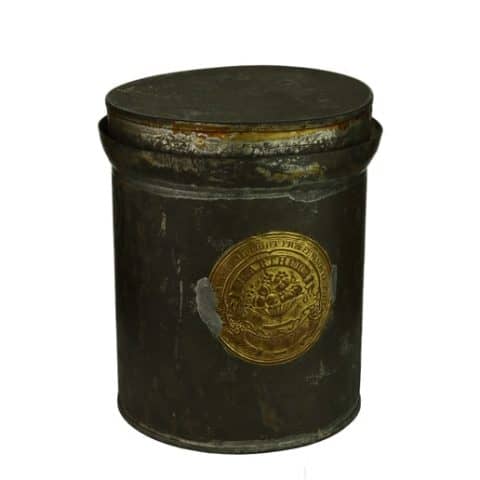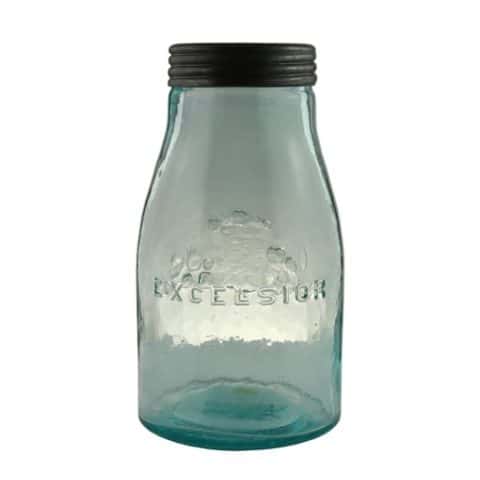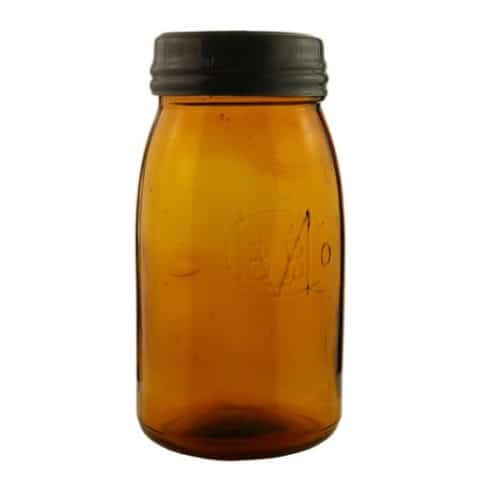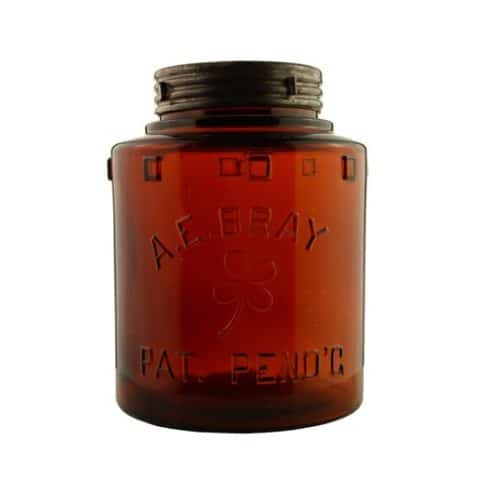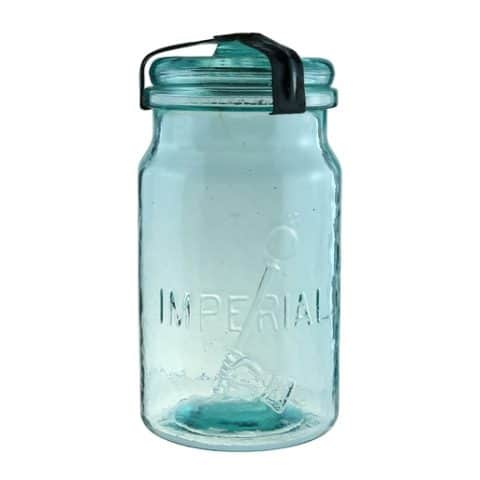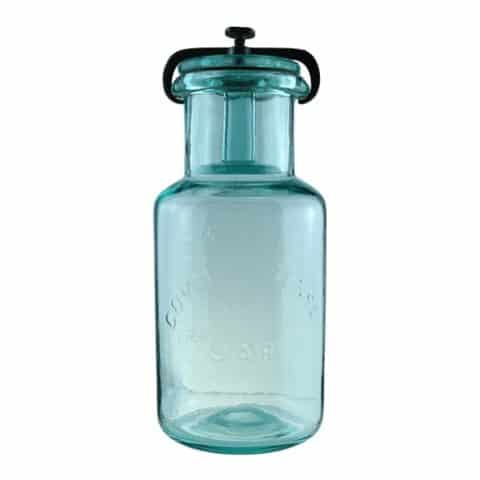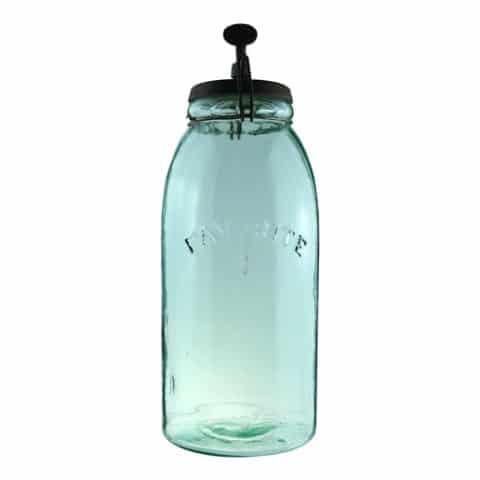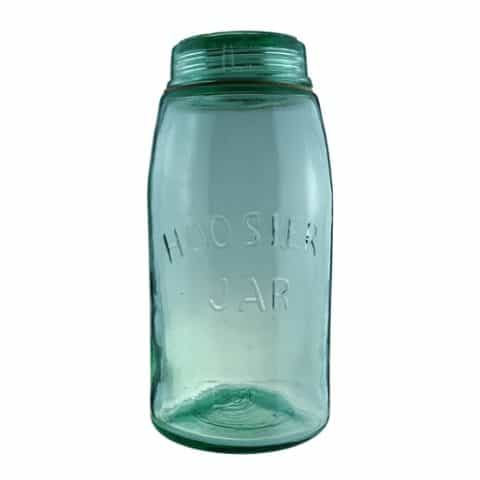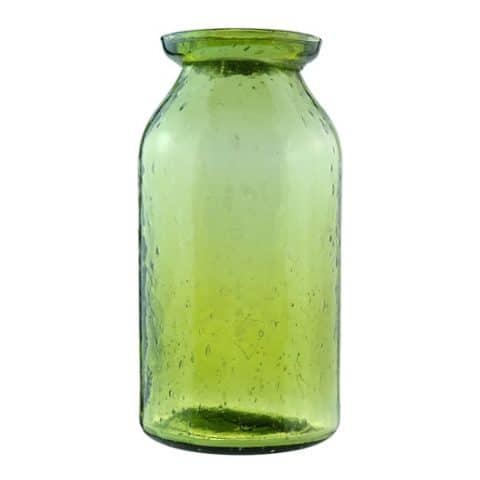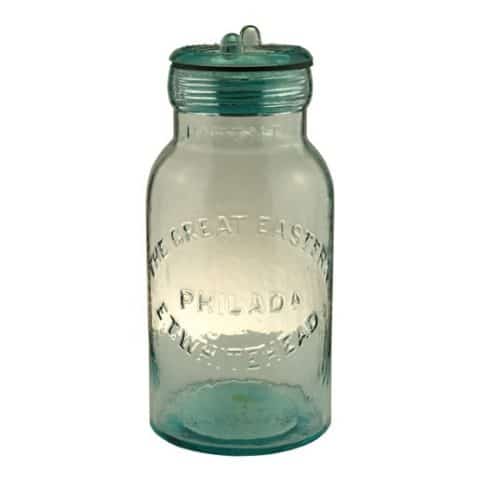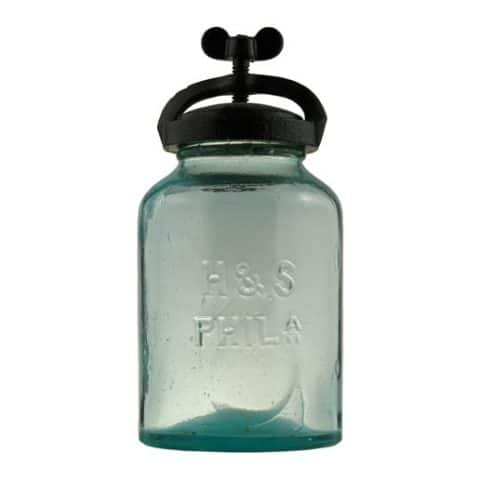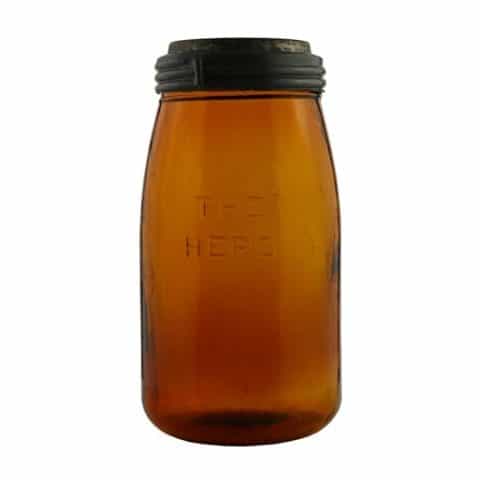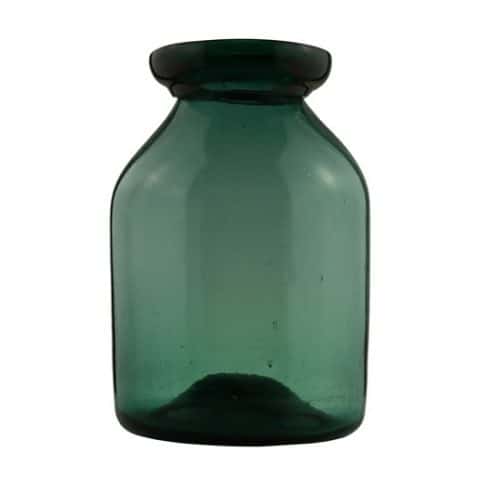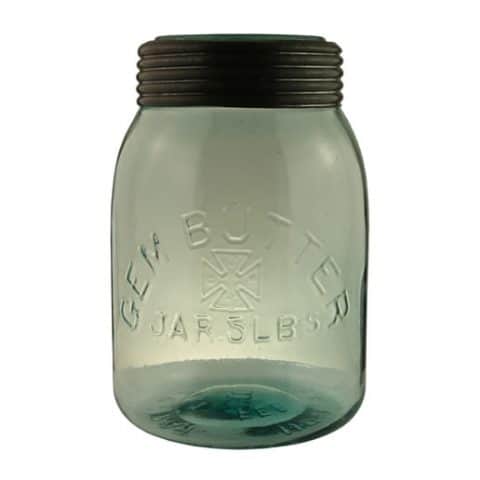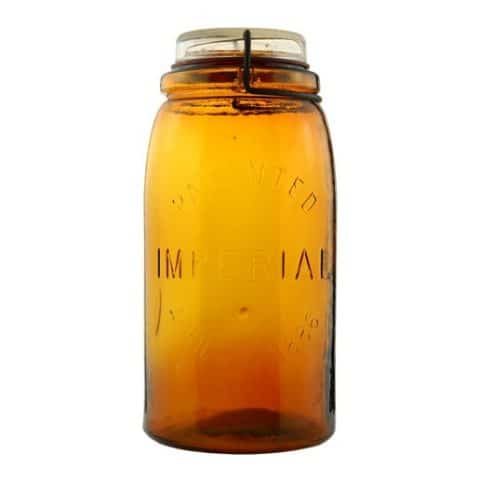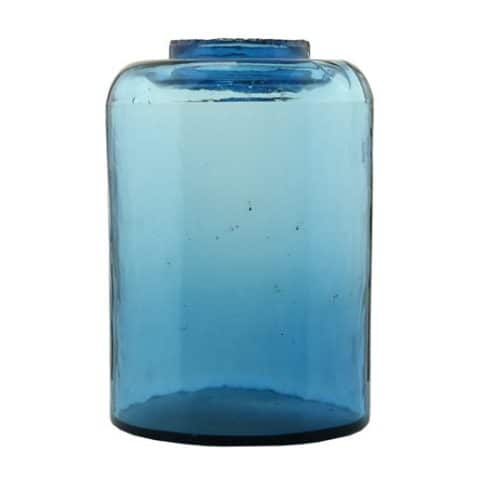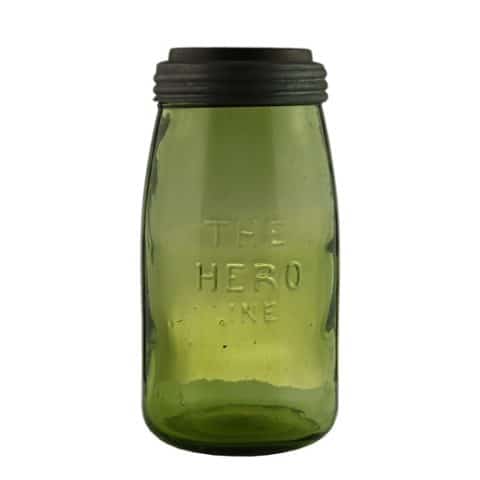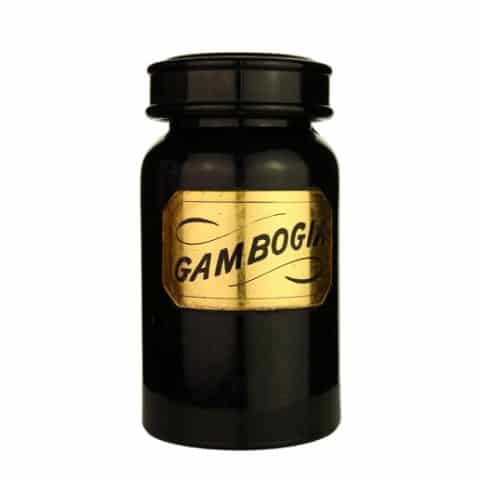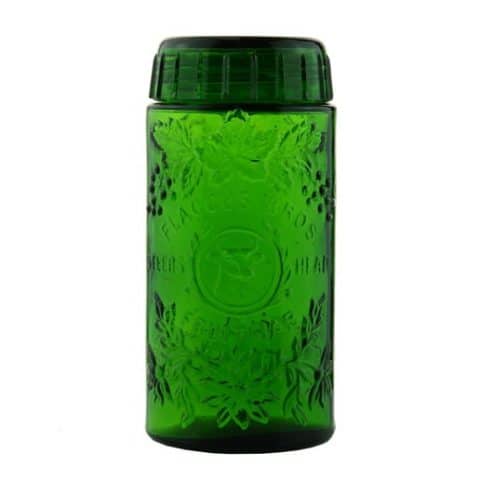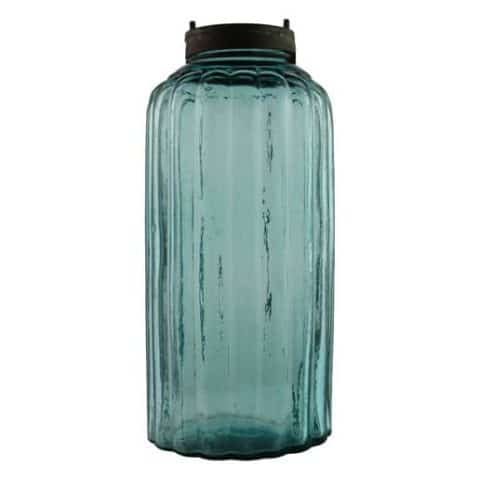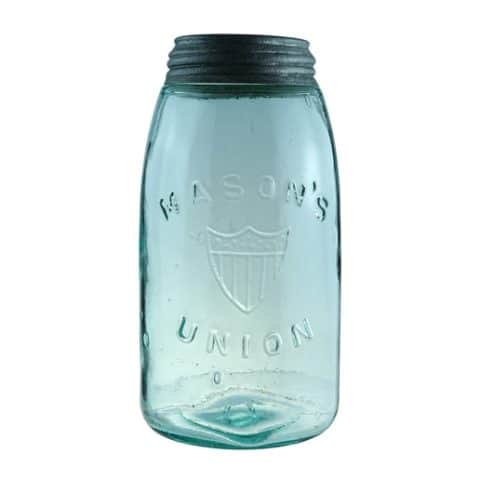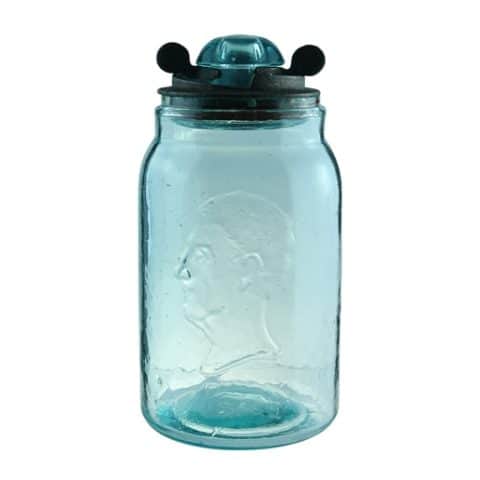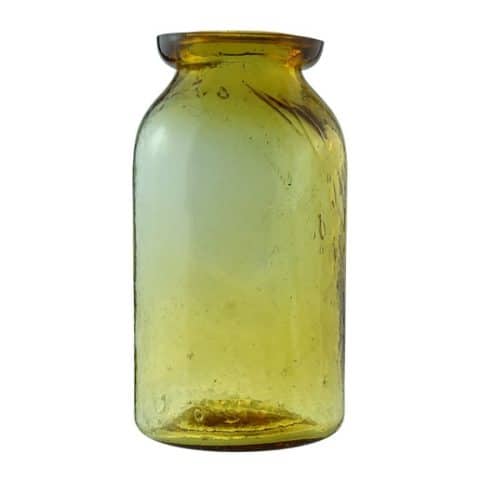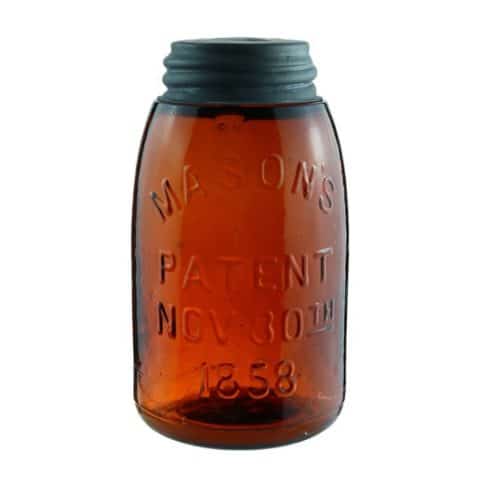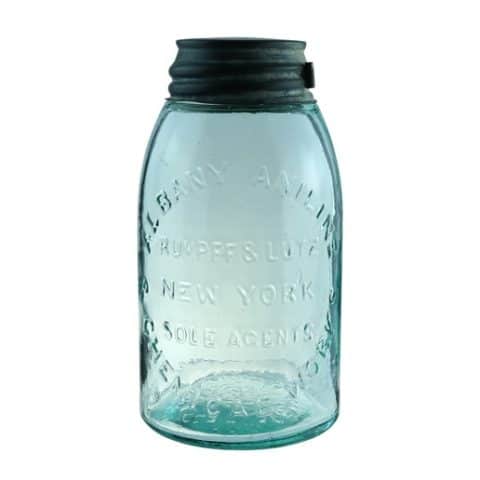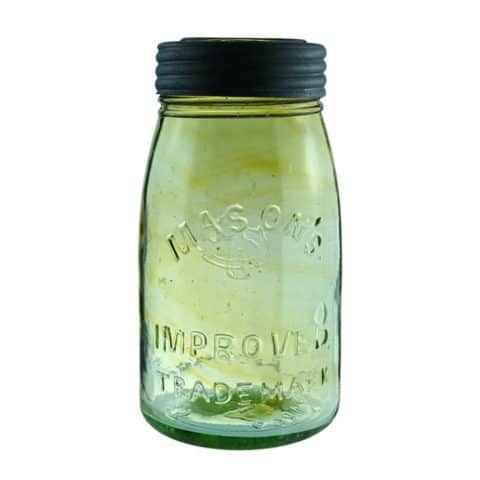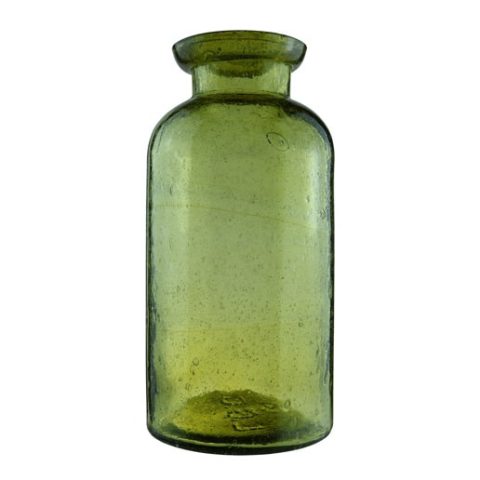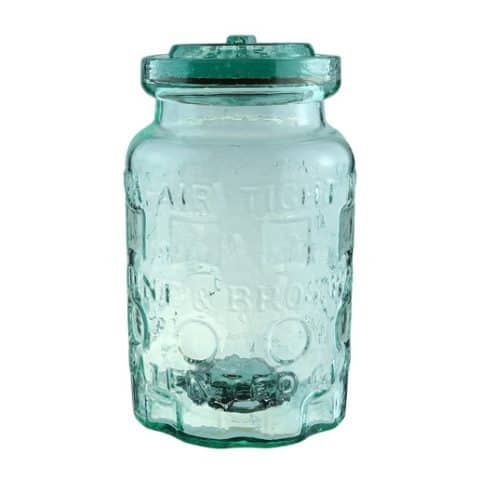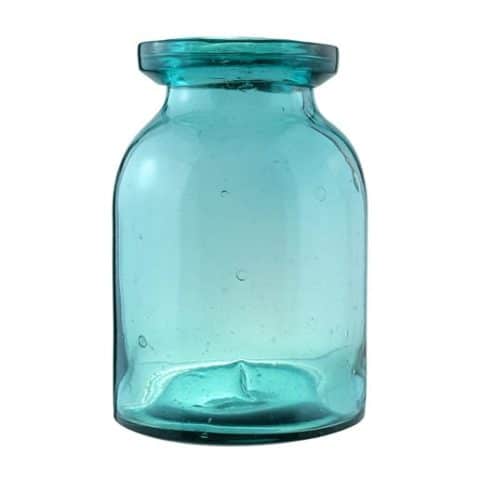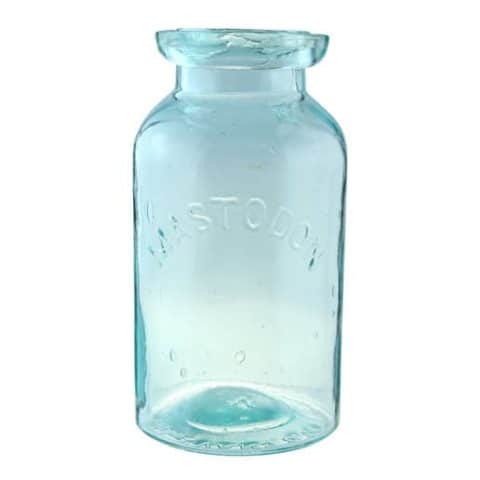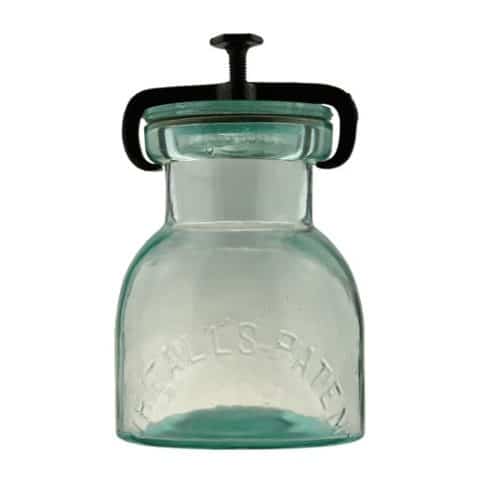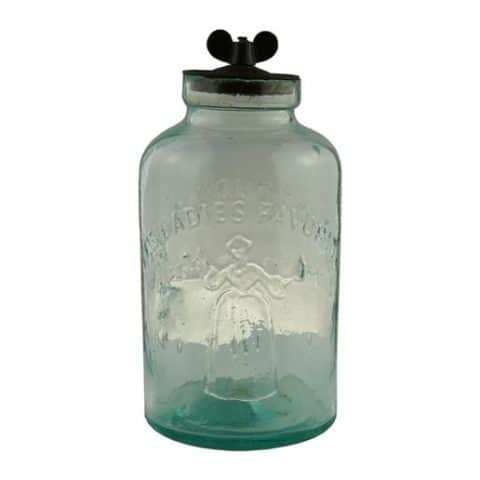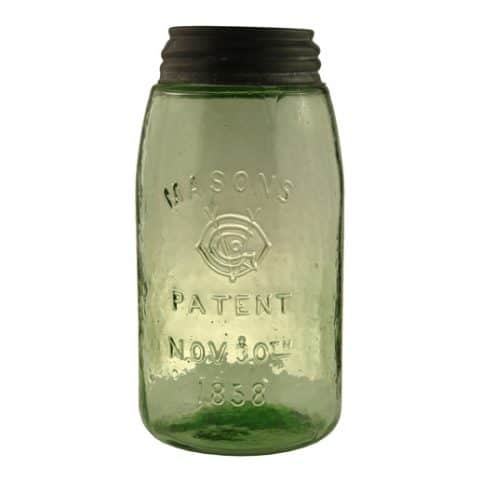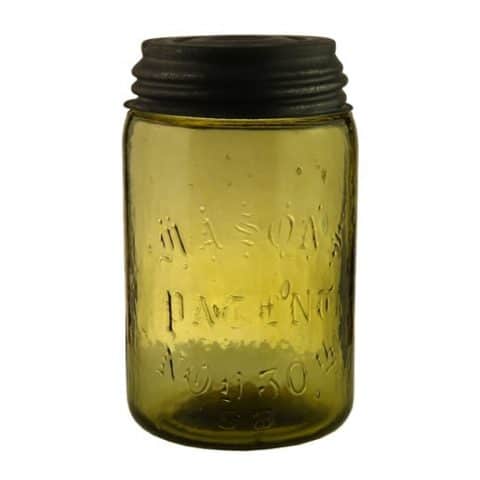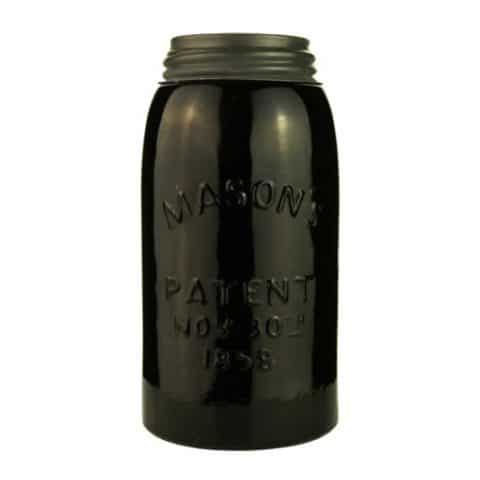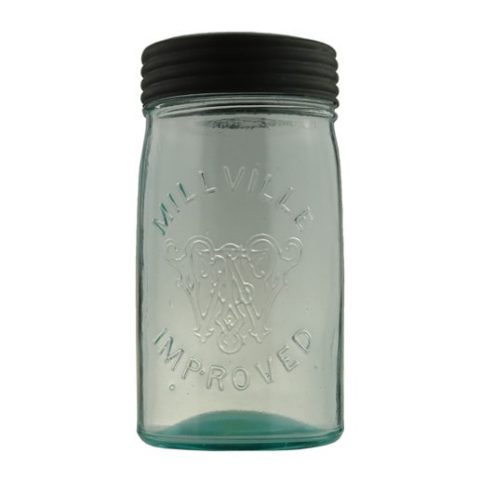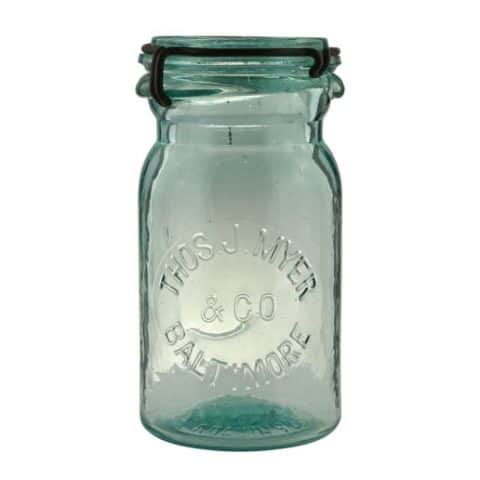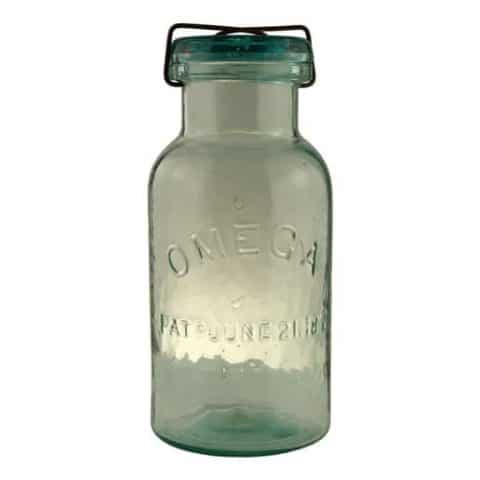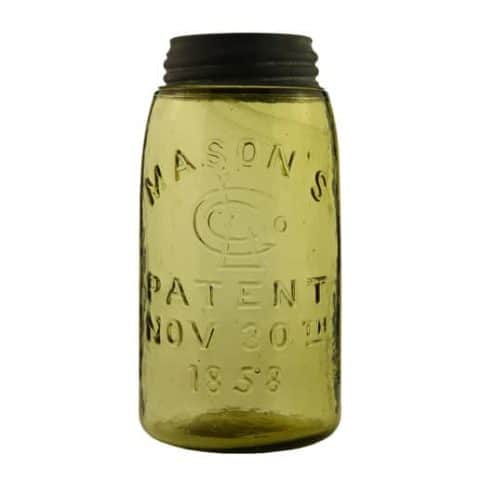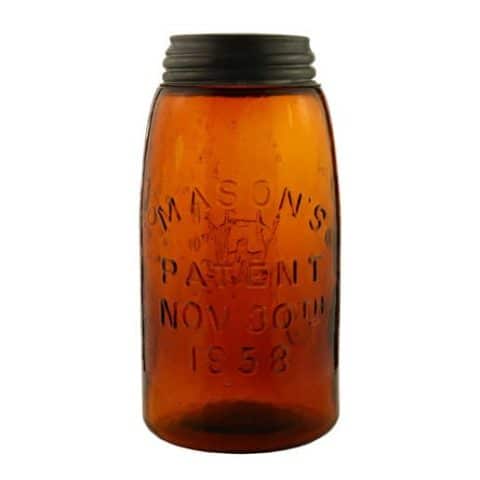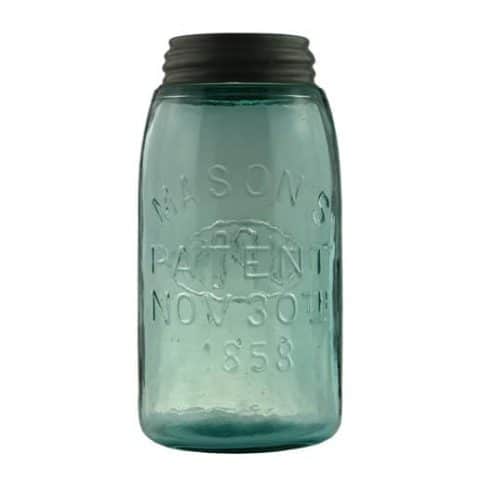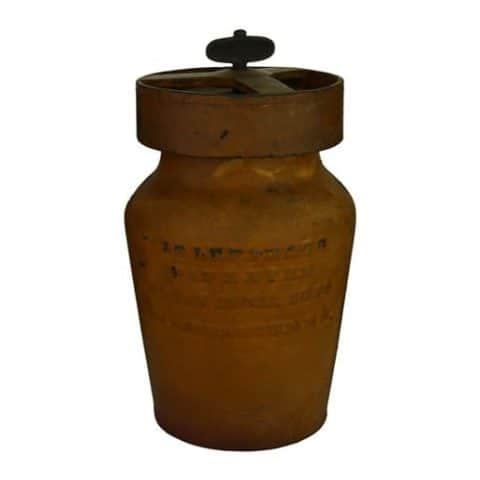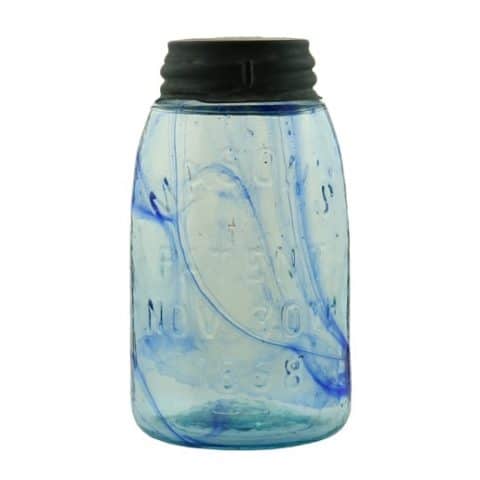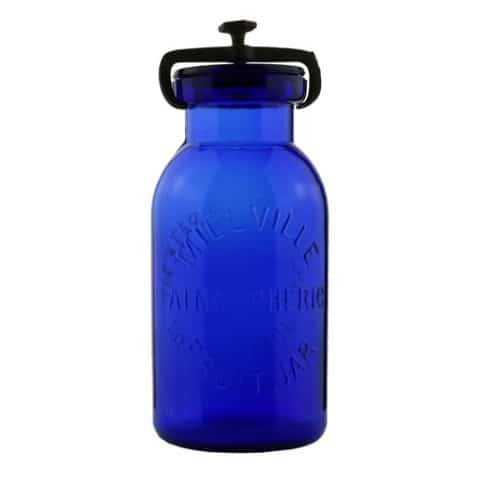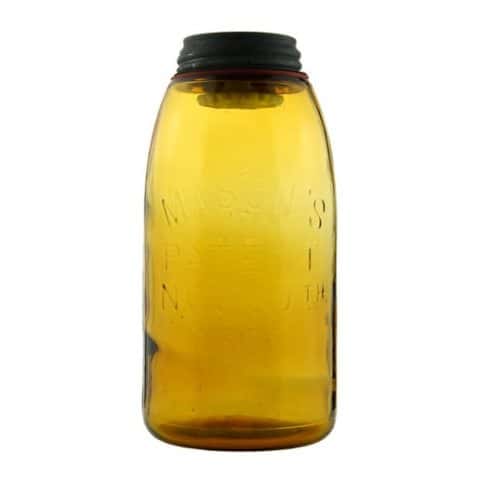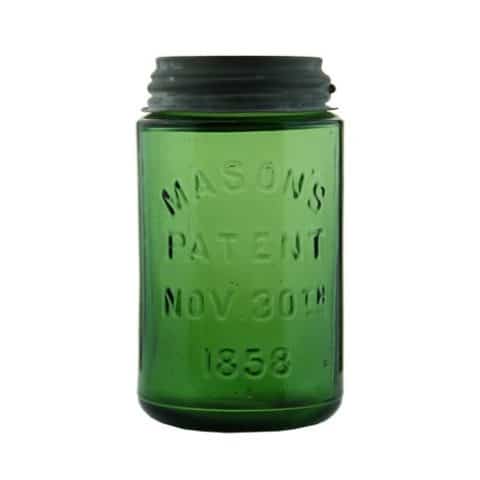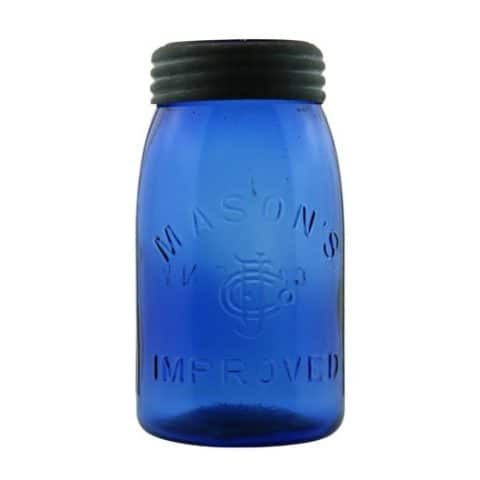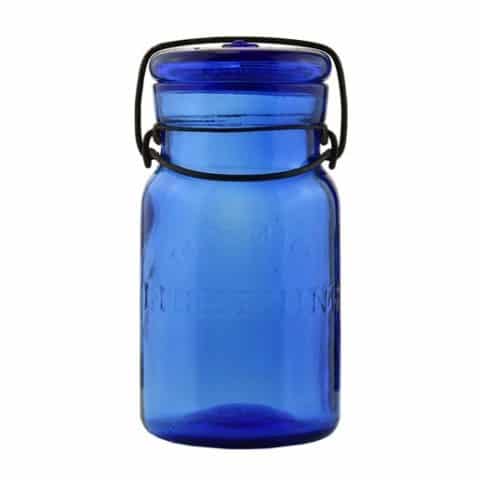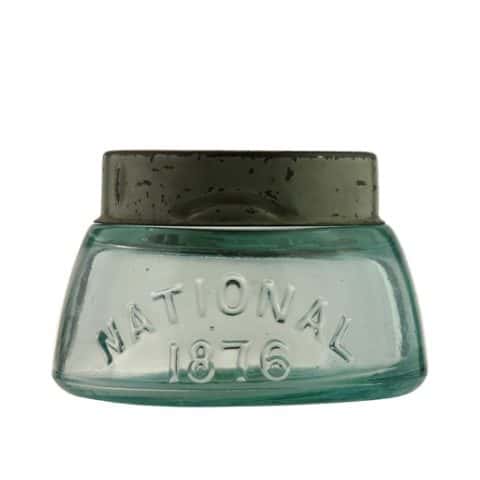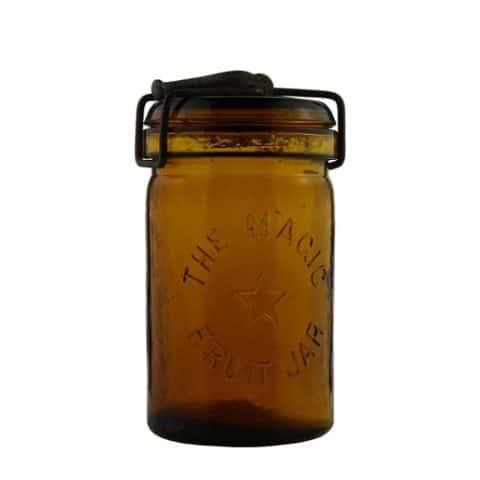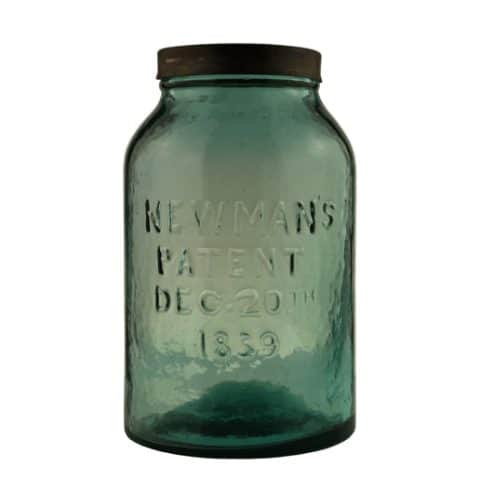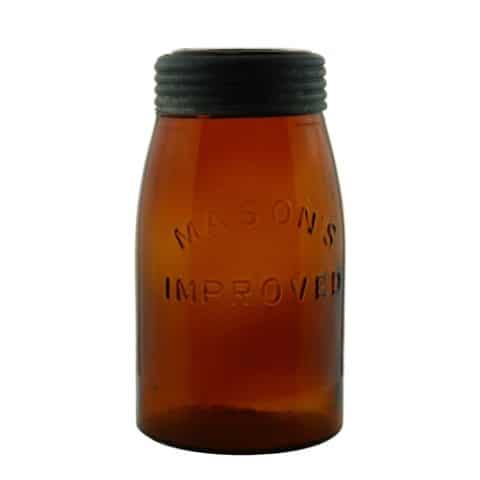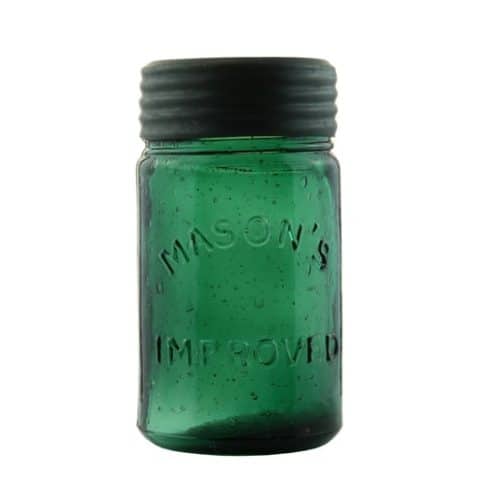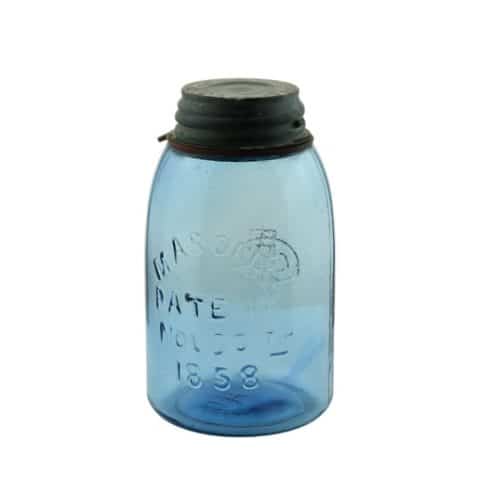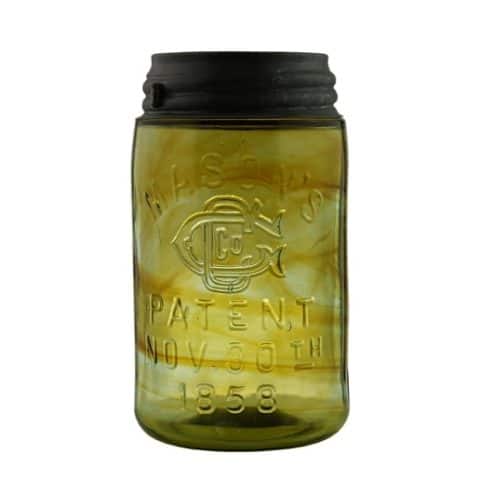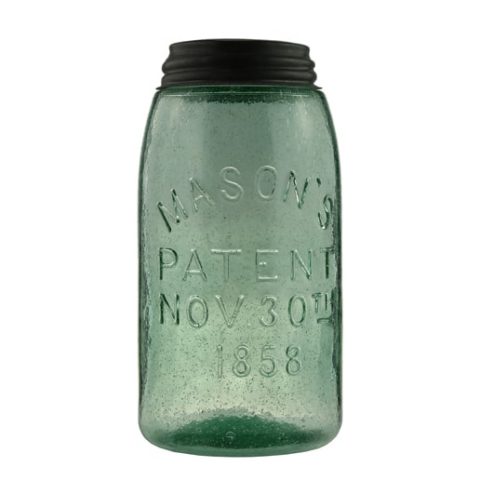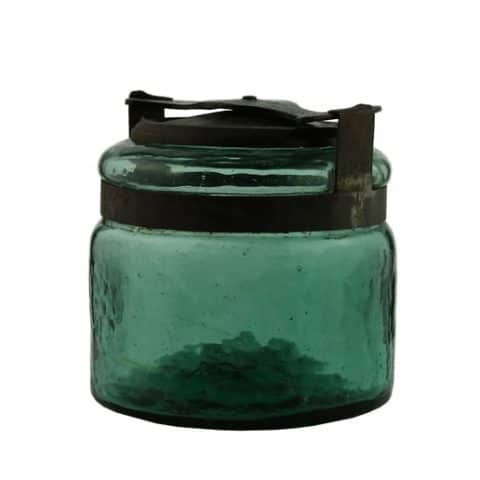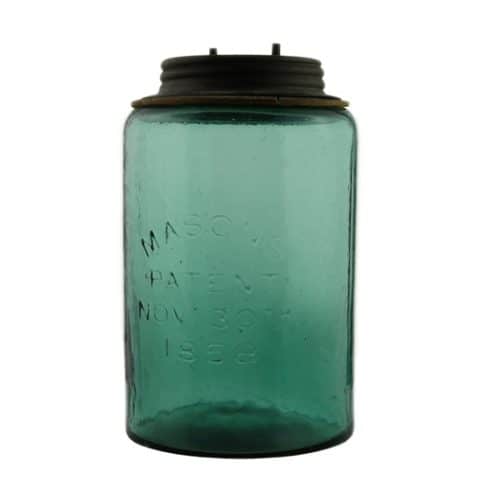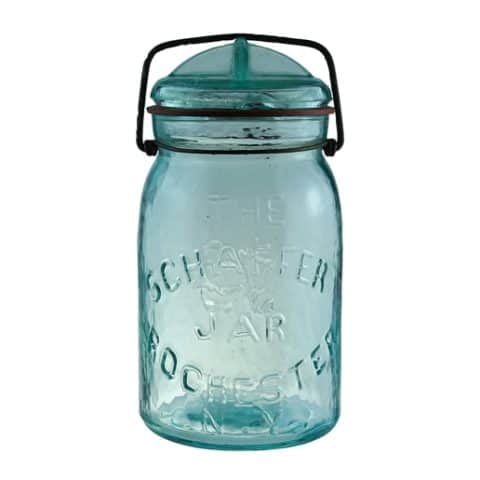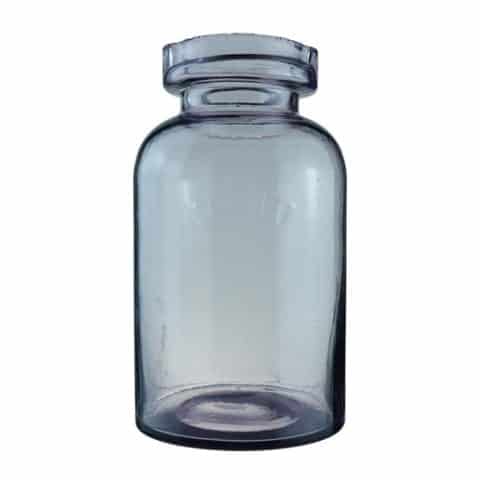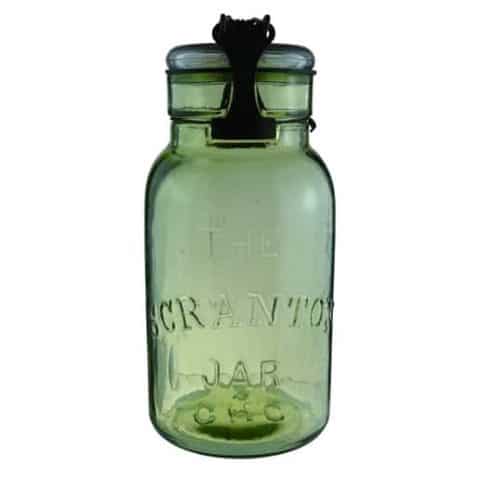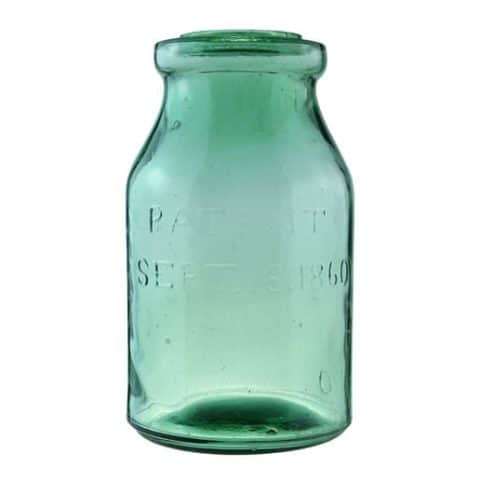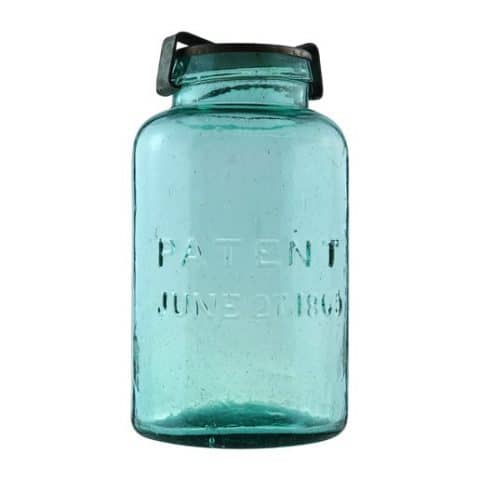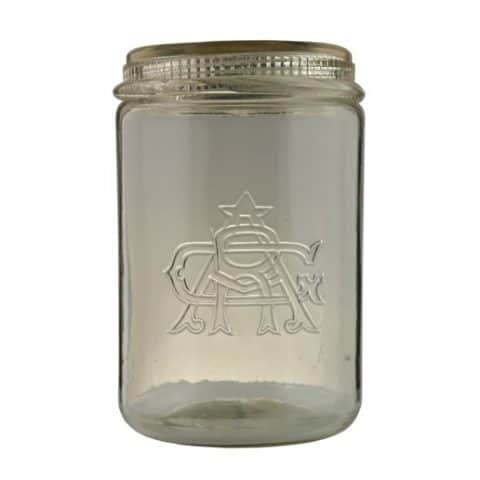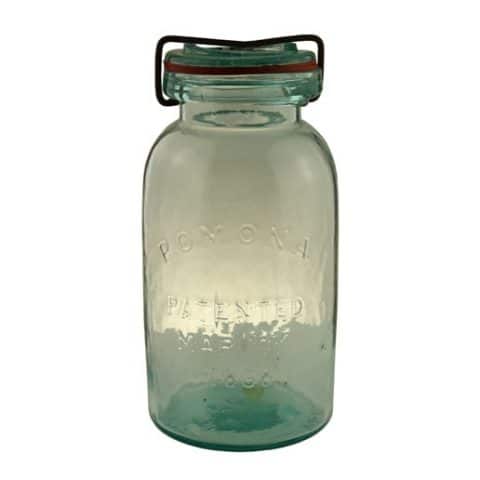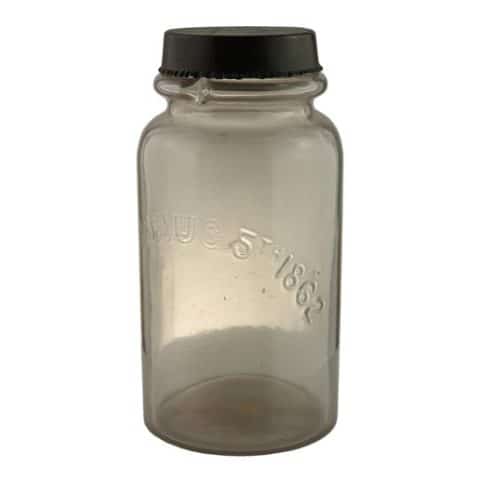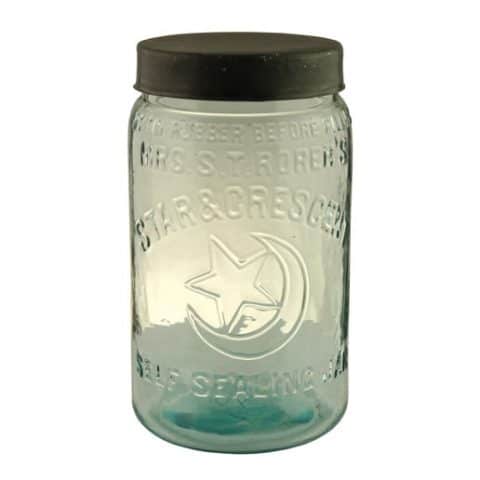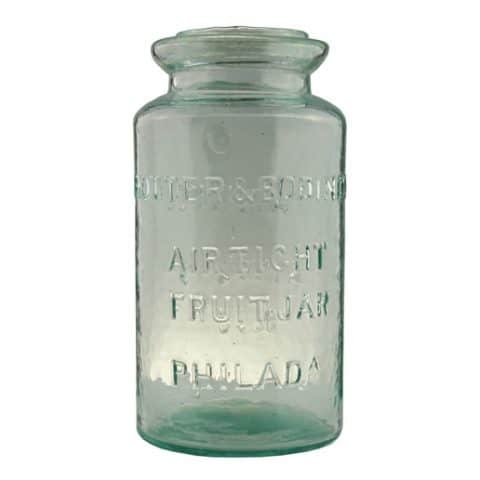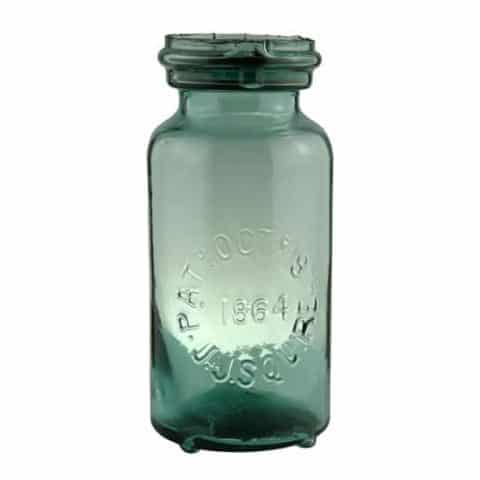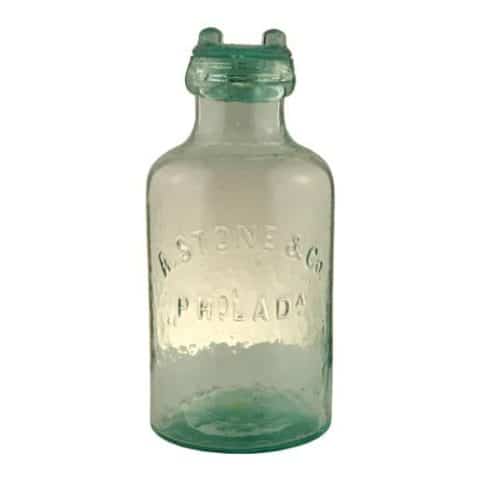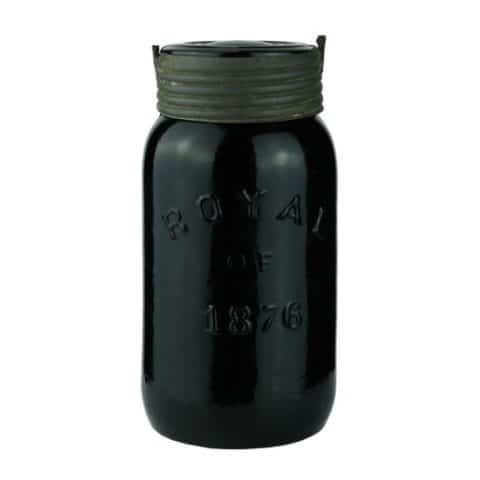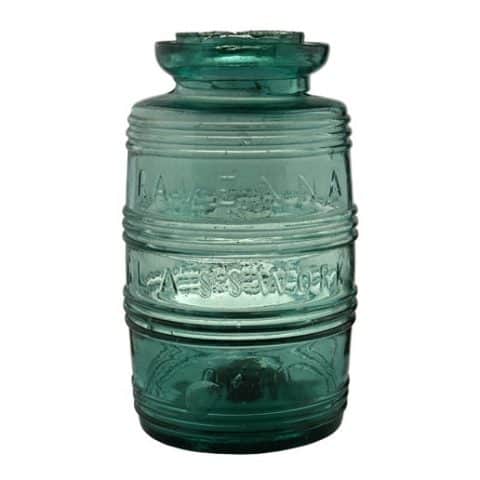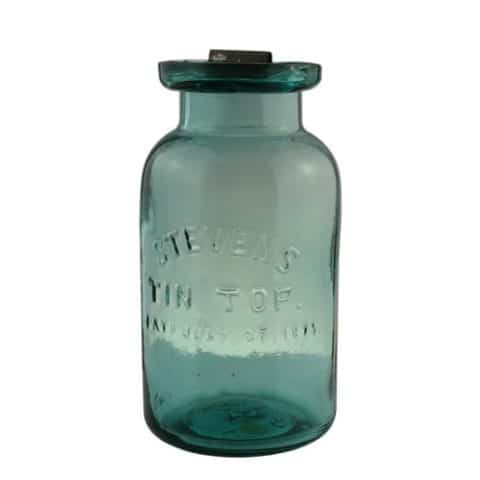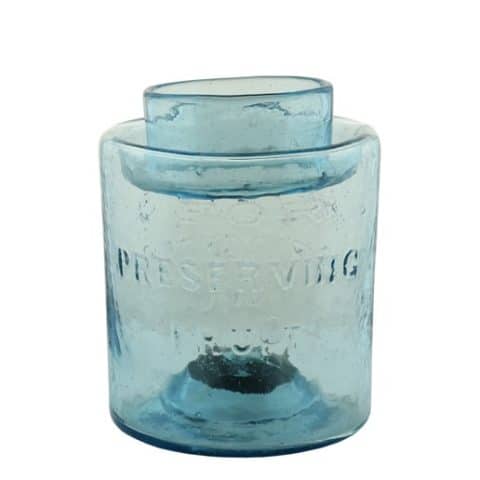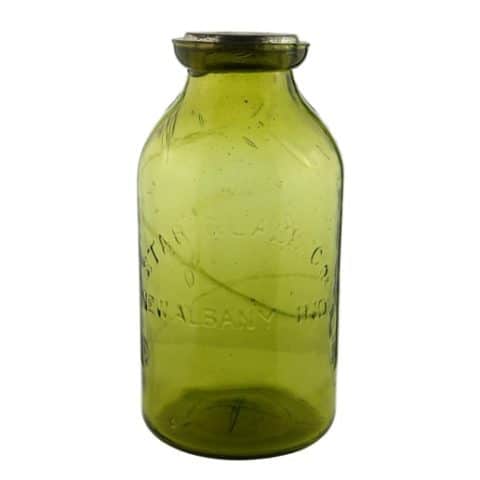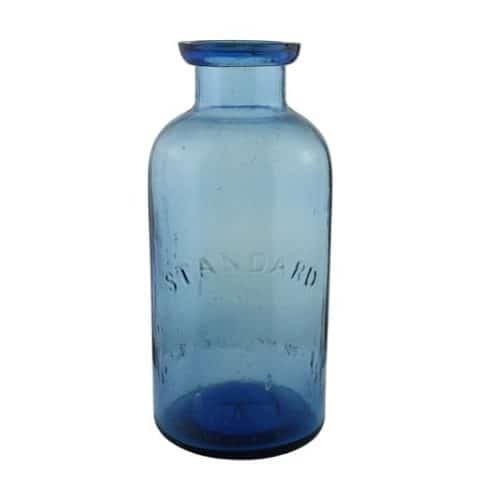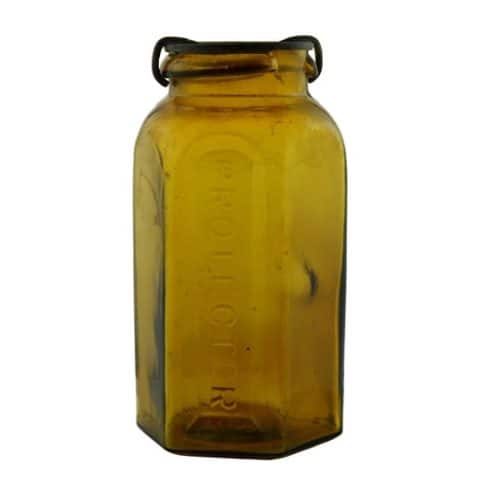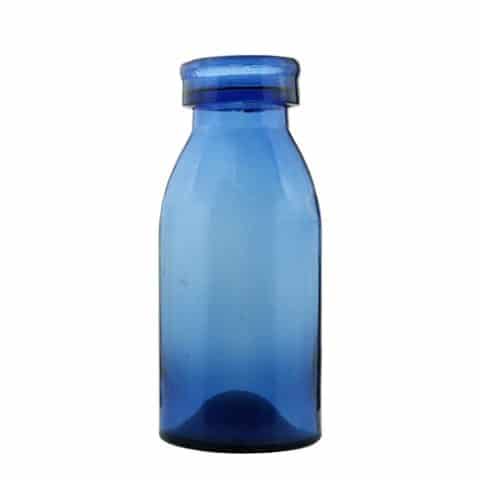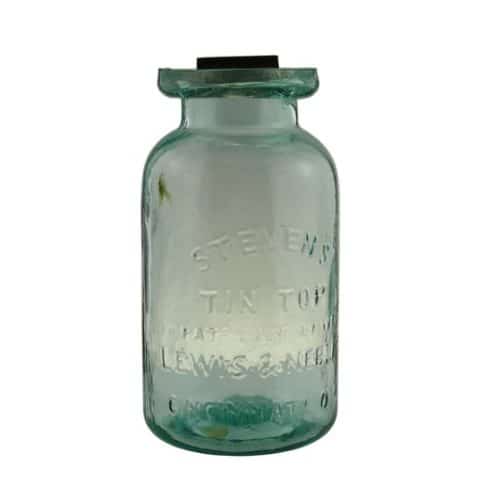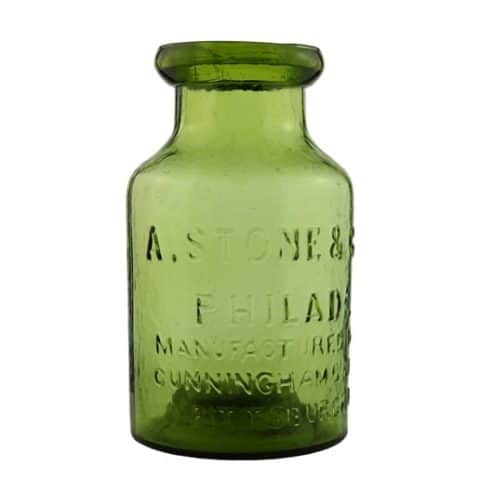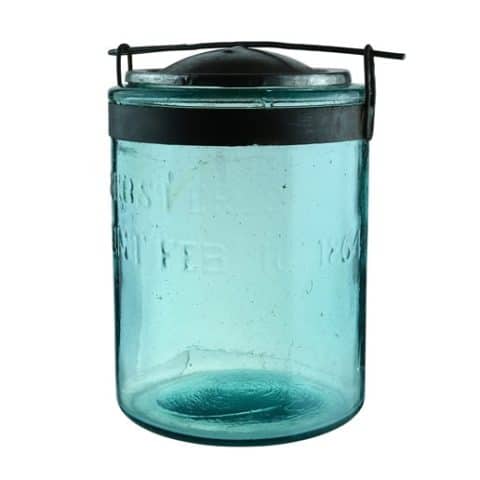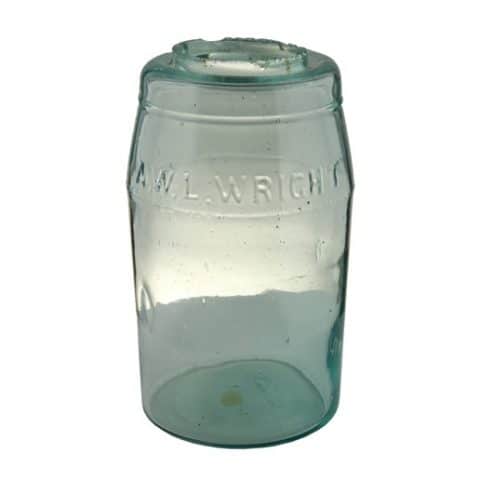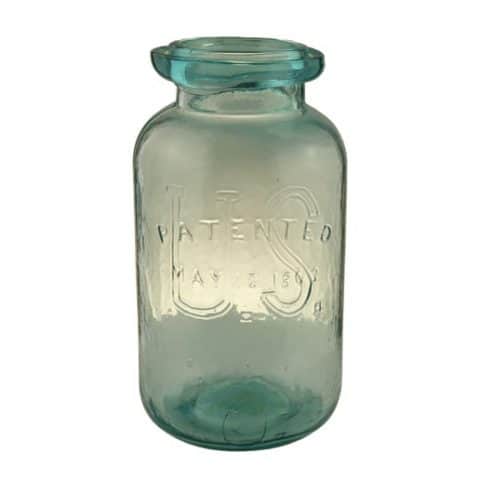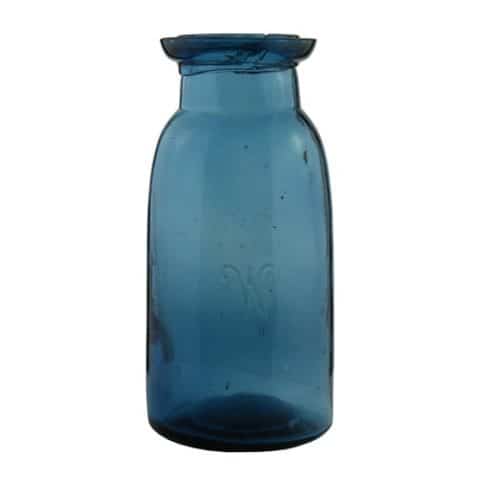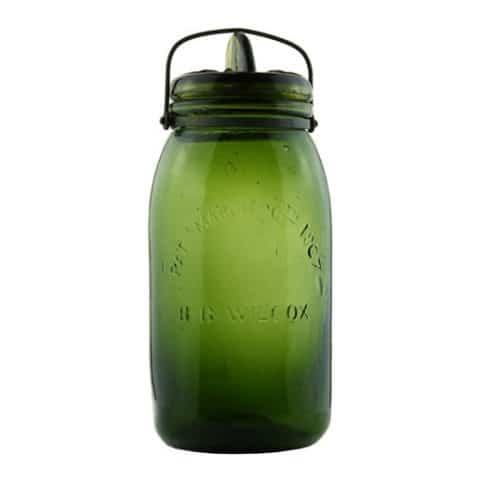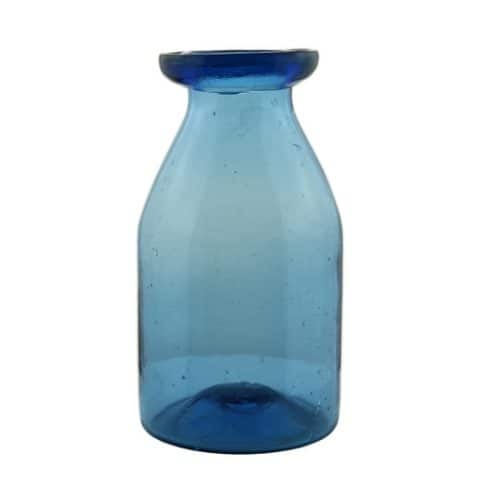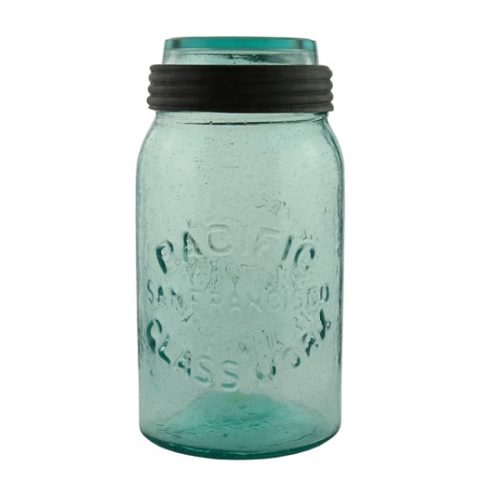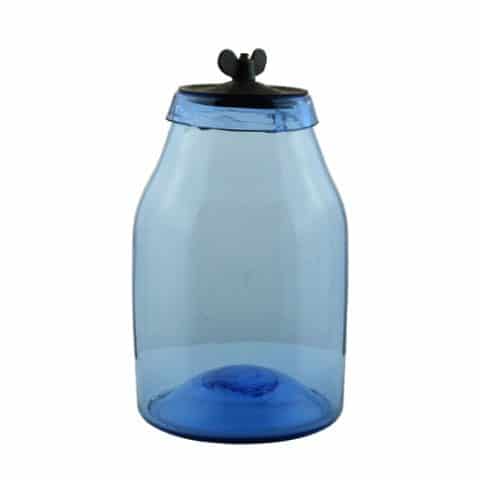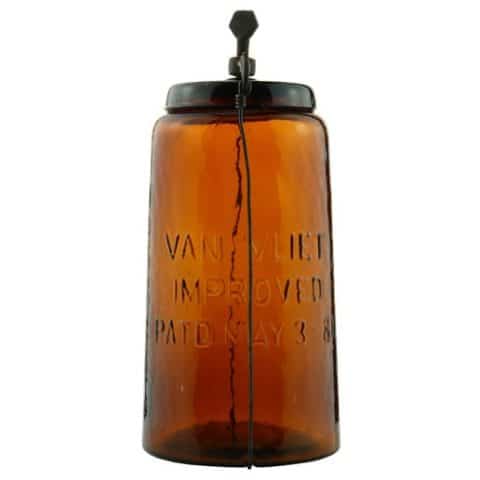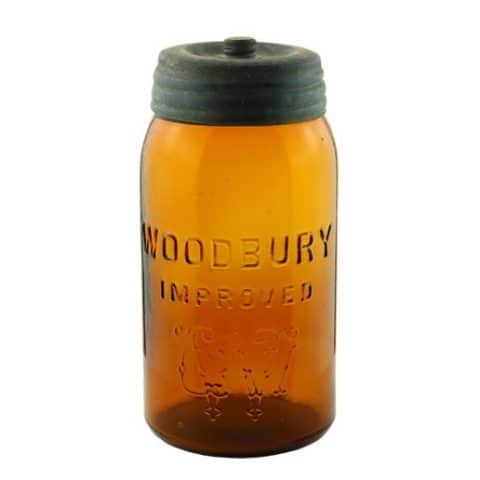Webster’s Patent Feb. 16. 1864
Webster’s
Patent Feb. 16. 1864
William Webster, Middletown, Ohio
Blue Aquamarine Quart
Provenance: Phil Smith collection
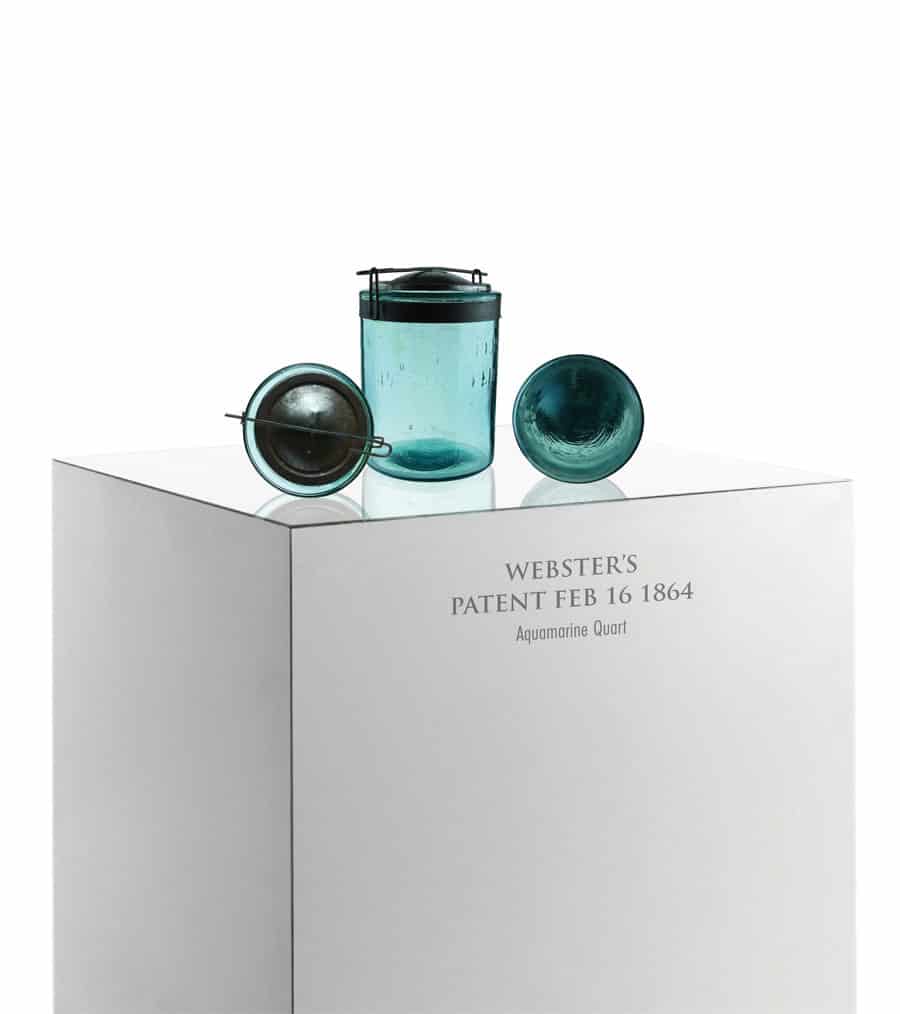
Our very rare “Webster’s Patent Feb. 16. 1864” dark blue-aquamarine quart jar is hand-blown with a ground lip. The odd closure is a top seal straddle lip tinned iron lid held down by a spring steel bar passed through two wire loops soldered onto a metal band around the jar’s neck.
The patent holder is William Webster of Middletown, Ohio, located approximately halfway between Cincinnati and Dayton, Ohio. Webster had several other patents, including two for fruit jar closures (1863, 1864), one for an “India-rubber packing-former” (1865), and two for making paper bags (1874, 1875). According to the 1870 United States Federal Census, Webster’s occupation was noted as retail and tinware. The 1880 Census listed his occupation as a paper bag manufacturer. Webster’s patent only mentions metal cans, so he may not have planned to make glass jars from them. Since he didn’t include jars in the patent, the patent might not have prevented Hemingray from using his design for the jar.

The face of the straight-sided jar is embossed in two centered lines; ‘WEBSTER’S’ (top line) and ‘PATENT FEB. 16. 1864’ (bottom line). A serif typestyle is used. The crude glass has some very nice character.
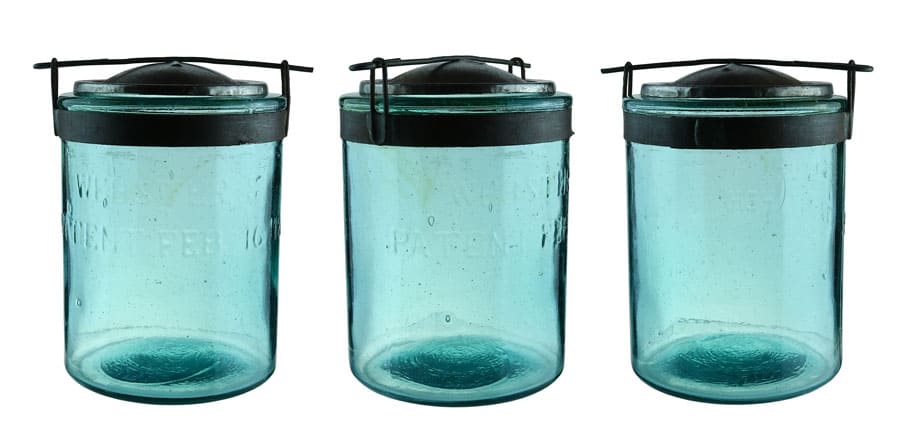
Fruit jar authority Alice Creswick illustrated six glass variations of the Webster container and one made of tin. One variant had rounded shoulders and was embossed ‘WEBSTER’S,’ while three had straight sides. One of these had ‘WEBSTER.S,’ while another had a space between the “R” and “S.” The third had “WEBSTER’S” on the front as well as the “1860 patent” on the reverse. The tin can was unmarked but used the Webster finish. Her final example was embossed ‘PATENTED WEBSTERS / SEPT 18 1860 / FEB 16 1864’—all ghosted. The jar had a sloped shoulder. She attributed all variations to Gray, Hemingray & Bros., and Hemingray Bros. & Co.
Each of the three different forms of the Webster’s Patent jar uses a different typeface. The straight-sided jar with no patent date on the back has a serif type. The straight-sided jar with Hemingray’s patent date on the back has sans serif type. The rounded shoulder (half-gallon size) jar has a different sans serif type than the smaller jar with Hemingray’s patent on the back.
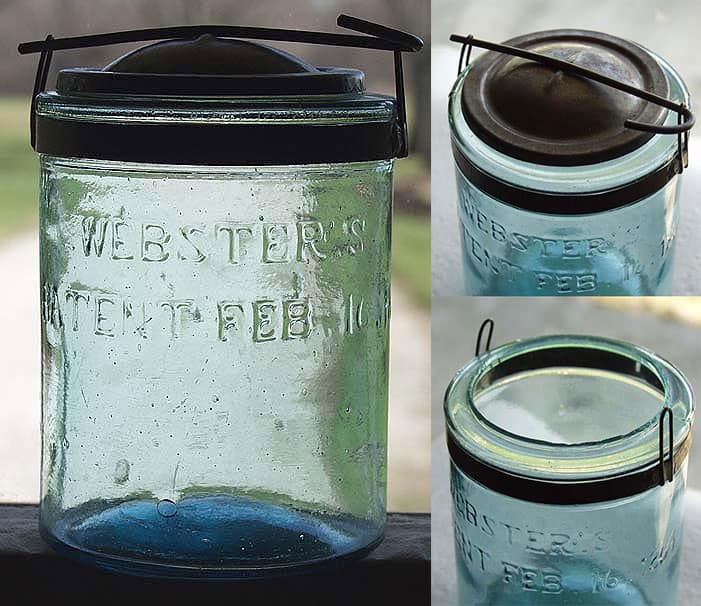
Primary Image: Webster’s Patent Feb 16 1864 jar imaged on location by Alan DeMaison, FOHBC Virtual Museum Midwest Studio.
Support: Secondary Image: Auction Lot 685: WEBSTER’S PATENT 1864, Odd Closure, Quart. A deep aqua quart embossed in two lines: “WEBSTER’S PATENT FEB. 16. 1864.” Sparkling glass with some nice crude character. No damage or stains. The mouth is sheared and not ground with roughness around the top from the making. The closure is a replica. A rare jar and a great-looking example. – Greg Spurgeon, North American Glass
Research Support: Dr. Thomas Sproat on William Webster patent.
Support: Reference to The Hemingray Glass Firms by Bill Lockhart, Beau Schriever, Bill Lindsey, and Carol Serr with contributions by Bob Stahr and David Whitten.
Support: Reference to Fruit Jar Annual 2020 – The Guide to Collecting Fruit Jars by Jerome J. McCann
Support: Reference to Red Book #11, the Collector’s Guide to Old Fruit Jars by Douglas M. Leybourne, Jr. Use of Creswick illustration courtesy Doug Leybourne.
Join the FOHBC: The Virtual Museum is a project of the Federation of Historical Bottle Collectors (FOHBC). To become a member.

